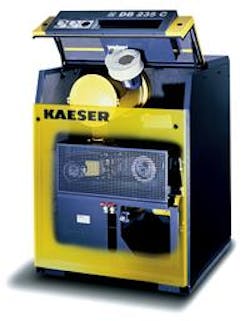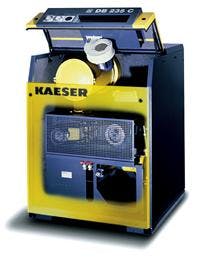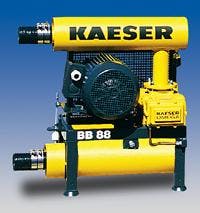New Blower Packages Improve Dewatering System Performance
By Calvin Wallace
Dewatering processes, such as carpet dewatering in the textile industry and pulp dewatering in the paper industry, are excellent opportunities for incorporating current rotary-lobe blower technology, and improving system efficiency and lowering operating costs. A rotary-lobe, positive-displacement blower set up for vacuum operation and coupled with a moisture separator before the blower provides a new dewatering method that is more energy efficient and significantly more controllable.
In dewatering applications, the rotary-lobe blower acts as a vacuum pump but does not require water for sealing and cooling. Some pumps in wet processes require water that must be continuously introduced and circulated. Additionally, because this water mixes with the process contaminants, the resulting discharge liquids must be treated. Even a closed-loop sealing water system does not completely eliminate make-up water and there are costs to pump, filter, and cool the seal water.
The absence of sealing water when using a rotary-lobe blower offers significant cost savings by reducing process water and water treatment costs. Also, the function of a rotary-lobe blower does not depend on maintaining water in circulation at high velocity. This means that rotary-lobe blowers use less energy to deliver the same process gas flow at a given vacuum or can deliver more flow for the same energy.
Rotary-lobe blowers can provide improved process control as well. In steady state systems, rotary-lobe blowers provide stable vacuum levels because variables such as water temperature and sealing water vaporization rates do not affect blower performance. In some vacuum pumps, vaporized sealing liquids displace process gasses and the resulting reduction in capacity affects the process vacuum.
Many systems do not operate in steady state and the gas flow requirements in the vacuum systems change. The blowers' capacity can be adjusted for changes in process flow requirements and can be operated over a broad speed range. On the other hand, vacuum pumps that operate on dynamic principals must operate within a relatively narrow speed range. Some other types of vacuum pumps still consume more than 70% of the full-load brake horsepower when at maximum turndown. In rotary-lobe blowers, the flow and power consumption is proportional to the speed. This means that the flow, and power requirements, can be adjusted to match the process flow requirements.
Kaeser Compressors Inc. in Fredericksburg, VA, offers a line of rotary-lobe blowers ideally suited to the industrial water treatment market. Process engineers can choose bare blowers or factory designed and customized packages, in high efficiency two-lobe or low-pulsation three-lobe designs.
The company's Omega blowers are available in a wide range of sizes with flows to 5,500 icfm, vacuum to 27" Hg, and are an excellent choice for upgrading dewatering processes. A staff of engineers and blower specialists are available to evaluate existing or proposed installations, and to design the right blower system for the process.
When all factors are considered, the return on investment in high efficiency equipment is easy to justify. In many installations, the energy savings and the reduced maintenance requirements pay for the blower in a very short period. In addition, improved control over the vacuum system can, in many cases, improve product quality and reduce defects.
With the increasing awareness of utility costs as a component of total production, virtually every manufacturer is seeking to improve process efficiency to be more competitive. While system operators have little control over the raw material and manufacturing costs, they do have some control over utility costs. By incorporating today's rotary-lobe blower technology, manufacturers can reduce electricity, water, and water treatment expenses.
About the Author: Calvin Wallace, National Sales Manager - Omega Blowers, has been with Kaeser Compressors for over seven years. He has more than 20 years of experience with rotating equipment and has extensive experience in applied rotary lobe blower technology.


